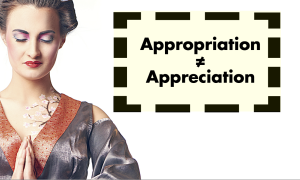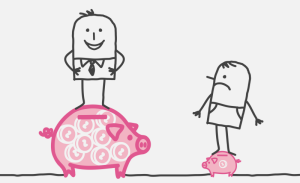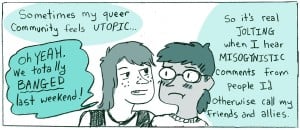
Source: Fuccha
Modern families exist in many different shapes and forms.
Long gone are the days when the majority of us lived in nuclear families – one mom, one dad, two kids. In fact, while we like to think of this as the “traditional Western family structure,” different familial patterns have existed across the globe, and in Western culture, things may not always have been so simple as they outwardly appeared.
These days, many families that start off using the nuclear model will adapt into something else entirely.
Parents separate, step-parents and siblings get added to the mix, relationships change. It’s not uncommon for children to live with their wider families – relatives such as grandparents, or aunts and uncles, having a much greater responsibility in child-rearing than a child’s biological parents.
And many families don’t even fit the nuclear family mold to begin with.
They’re alternative families from the get-go – women who choose donor insemination and to raise children as single mothers, parents who adopt or use surrogates, LGBTQ+ families with two parents of the same gender. These are just a few examples of the countless different ways of creating and raising a family, all equally valid and loving.
This can mean that it’s not always immediately apparent how a particular family is structured, and this can cause some confusion and anxiety.
You may find yourself wondering what the exact biological relationships in a family are. You might also be curious about whether these impact on personal relationships – whether children and adults relate to each other differently when their own genetic connections don’t seem to be so clear cut.
It’s easy to make assumptions about a family, based on what is familiar and normal.
To mistake a second father or mother in an LGBTQ+ couple as an aunt, uncle, or nanny, for instance, or to incorrectly believe that the child born as a result of donor insemination is adopted, because he or she doesn’t look quite like their parents, can happen.
But some of the assumptions we make can hurt.
Comments which we might not have second thoughts about, and which are not deliberately intended as malicious, can still be experienced as offensive and painful.
Most of us certainly don’t mean to cause offense; it’s just that we make assumptions because we don’t know any differently.
It is true that we cannot be expected to predict the particular circumstances of each and every family we come into contact with. And as families evolve, we can’t prepare ourselves for diversity in advance by being pre-informed about every possible family structure.
However, what we can do is educate ourselves to become better at dealing with nontraditional families, so that when we encounter them, we’re not surprised into saying something potentially harmful.
We can learn to adapt our behavior and language so as not to make assumptions in the first place – giving everyone we meet the space and time to define their relationships without feeling under pressure to conform to any pre-conceived notions of what those might be.
So what does this look like in practice?
1. Language
A good place to start can be being mindful of your language.
Language often highlights our base assumptions.
For instance, I am the daughter of two lesbian mothers (who are now separated). I was recently talking to one of my colleagues and mentioned one of my mother’s ex-partner. In response to my anecdote about a prize she had been awarded with, my colleague responded, “What a good man.”
This was clearly intended to be a positive comment. She was recognizing the good behavior that had earned my mother’s ex-partner her award. However, in presuming my mother’s ex-partner to be male, she put me in an uncomfortable situation.
I was faced with the decision to say nothing – to continue the conversation without challenging the assumption and outing my mother and her ex-partner as lesbians – or to specifically address her use of gendered language and unconscious expectation, thus altering the topic of conversation and putting myself at potential risk as I did not know what my colleague’s response to my family structure would be.
There are a few ways that this situation could have been avoided.
Firstly, my colleague could have used gender-neutral language – “what a good person” replacing “what a good man.”
Secondly, she could have offered options. This choice isn’t always appropriate, but can work really well in some situations.
For instance, if you do not know somebody’s sexuality and they refer to their partner, it’s preferable to ask, “What does he or she (or they) do?” thus indicating that you’re comfortable with that individual’s partner being of any gender, rather than using a pronoun that may be incorrect and put the person you’re talking to in a difficult position.
Offering options can also work really well with kids when you want to make something feel like a game.
Rather than asking “Was that your dad I saw you playing with at the park today?” try asking “Was that your uncle? No? Okay, how about your grandpa? Was it your friend? No? How about an alien? Well then, your aunty?” all to squeals of “no!” and giggles until you hit the right answer without having caused anybody embarrassment or pain.
Thirdly, my colleague could have used language which avoided making any gendered assumptions at all. Rather than identifying a gender in her speech, she could have just framed her response to avoid this, for instance saying, “That sounds great! What a fantastic award!”
A friend who is a teacher recently told me that he has learned not to make any assumptions about the families and home lives of the children he teaches.
Rather than referring to their parents, he might ask who cares for them at home or discuss the adults in their lives who look after them, allowing them to choose to reveal their personal family contexts as and when they feel ready and willing to do so.
So do try to use language that avoids perceived certainties and allows people to respond openly.
They still may not choose to reveal their exact family structure, but at least they’ve been given the option, and anything they do choose to reveal won’t be framed in conflict, as an oppositional truth to your mistaken assumption.
2. Reaction
Other than using open language, we can also modify our behavior in response to surprising news.
I have never expected people to be prepared for news of my parentage. For somebody my age, growing up with two mothers is relatively rare, so people aren’t primed for such a revelation.
I don’t want them to feign indifference. It’s okay to be mildly surprised. However, it’s better to appear to be gently surprised, yet still receptive, than outrageously shocked.
Thus, when someone tells you “No, I don’t have a dad; I have a donor” or “That’s my mom, but I was born in someone else’s tummy,” an ideal way to respond is to admit your surprise, but frame it positively.
There are three easy steps you can take: Firstly, apologize for any mistaken assumptions you made. Secondly, affirm that you’re comfortable with that person’s family and that their family is a perfectly legitimate one. And lastly, don’t be afraid to admit that you don’t have experience of families like theirs, and so would be interested in finding out more.
What this looks like in practice is saying something along the lines of “Oh, I’m sorry I thought that. I’ve never met anyone like you before, but you seem incredibly lucky to have such a lovely family, and I’d love to know more.”
It might be that the person you’re talking to is eager to share, or maybe they’re not. Either way, you’ve at least signaled that if they do choose to tell you more, you’ll be receptive and not critical.
Kids can cope with the fact that they, or their family, is different.
What is key is that you always need to make them know that that difference is good, not bad – that it’s cool that theirs is an unusual family, that that makes them special.
All that really matters is that children have loving people around them, not who those people are or what their biological relations are.
3. Find Out More
Sometimes we know that somebody’s family is different, and yet we feel too embarrassed or awkward to ask further questions.
You might kind of know that little Bobby spends half his time with two men and half his time with a woman, but not quite know if that means all three are seen as equal parents.
Sometimes knowing the facts can help you to avoid making generalizations and allow you to use the right language around the family in question.
So what do you do if you’d like to know more?
Simple: You ask.
It’s not forbidden to ask questions. It is important, though, to follow some ground rules.
Try not to expect set answers. If you’re inquiring about somebody’s personal life, then be prepared to listen and accept, not challenge according to your own norms and expectations.
You should also ask your questions at appropriate times. Be responsive to verbal clues and body language that suggest that the conversation is unwelcome, and don’t prolong a discussion which appears to be uncomfortable for anybody.
Be prepared to talk about your own family. It’s only fair that if you want to know the ins and outs of somebody else’s family life, then they might want to hear about yours in return.
Ask open questions! Even if you’ve been researching online for facts about adoption in preparation for a conversation at the school gate, never presume that the person you’re talking to has the exact same story which matches what you’ve previously experienced or heard about.
Don’t be offended if the other person doesn’t want to talk. They may well find themselves explaining and justifying their family structure every other day and just want to get on with their life.
Asking questions is never necessarily a bad thing – but the way you ask matters.
***
When interacting with people you don’t know intimately, always bear in mind the fact that their family might not be a typical one.
The best way to approach this possibility is to avoid making assumptions by being careful with your language, letting them know that you’re welcoming of difference, being open and honest in seeking more knowledge, recognizing when your questions are encouraged or resented, and responding appropriately.
That’s the very least we can all do when dealing with alternative family structures and beyond.
[do_widget id=”text-101″]
Want to discuss this further? Visit our online forum and start a post!
Shoshana Davidson is a lifelong feminist and bibliophile living in London. She has a particular interest in LGBTQIA, gender, and race. She blogs about her experience growing up with two lesbian mothers at My Motherfull Family.
Search our 3000+ articles!
Read our articles about:
Our online racial justice training
Used by hundreds of universities, non-profits, and businesses.
Click to learn more




















